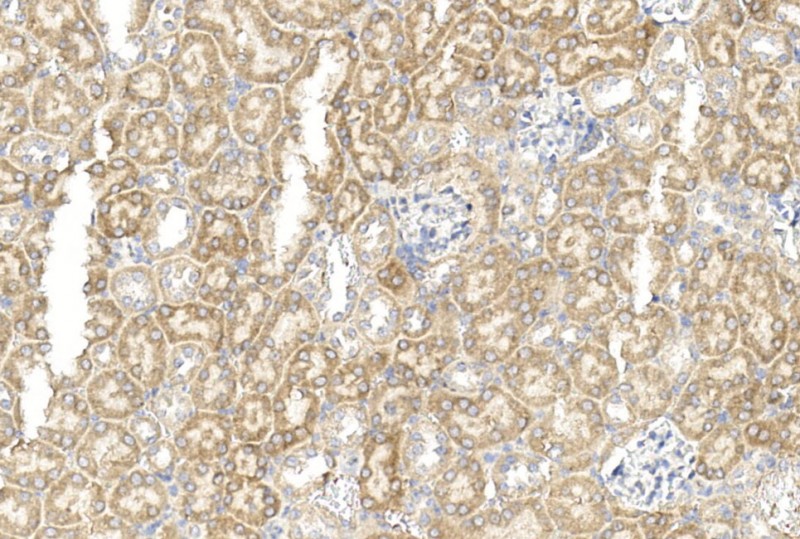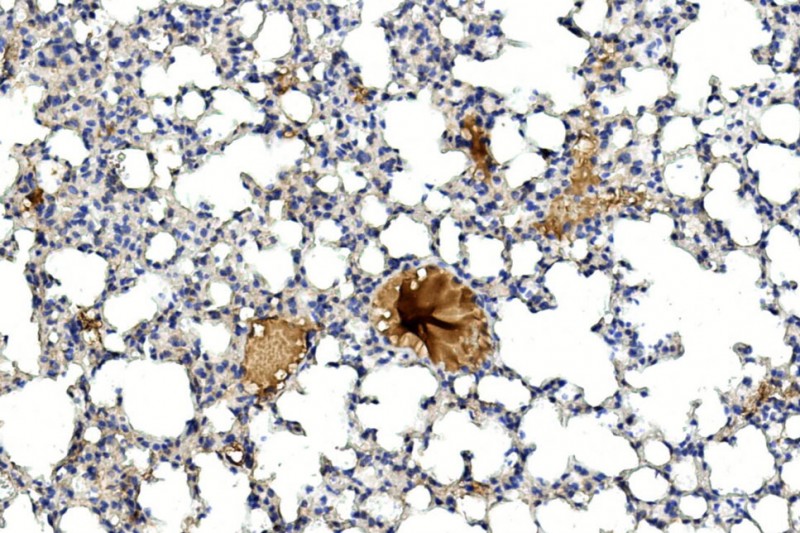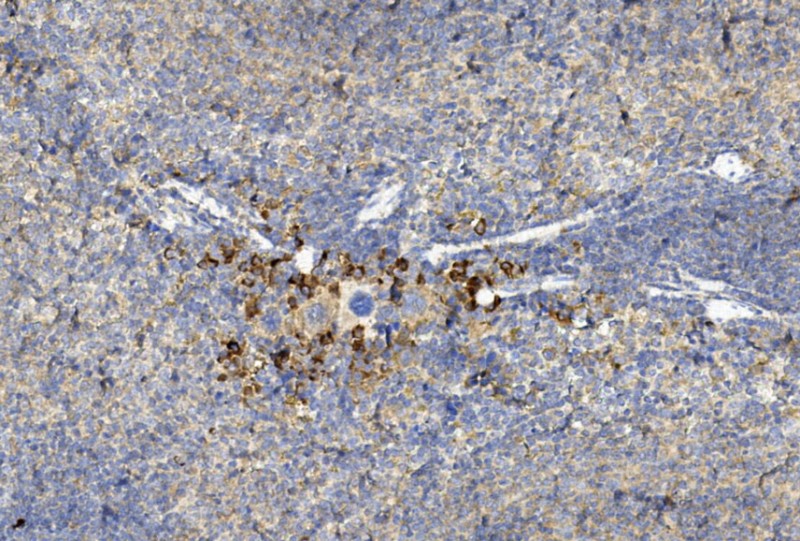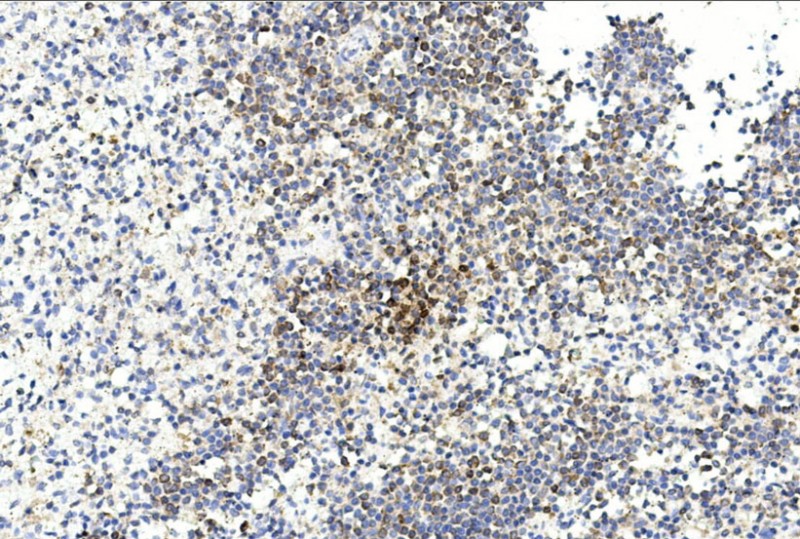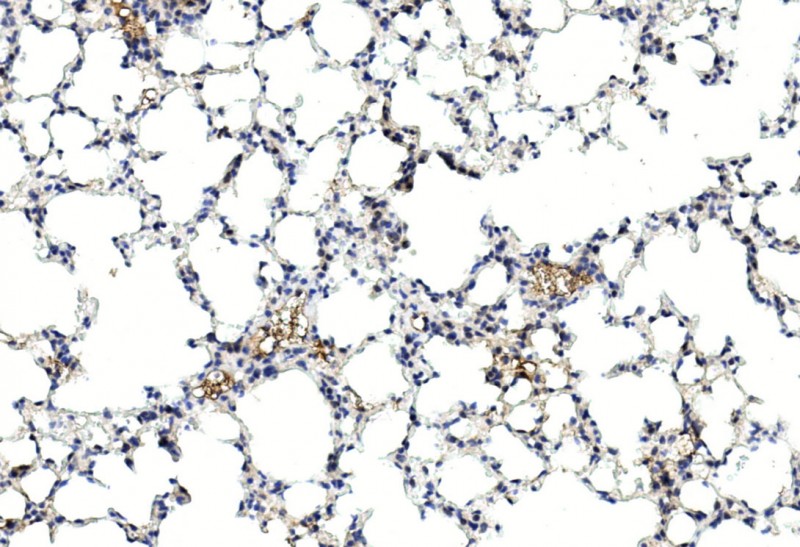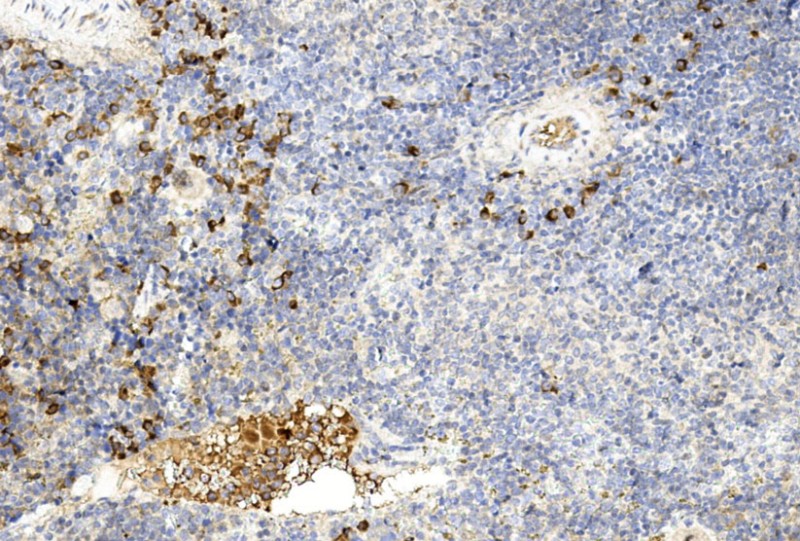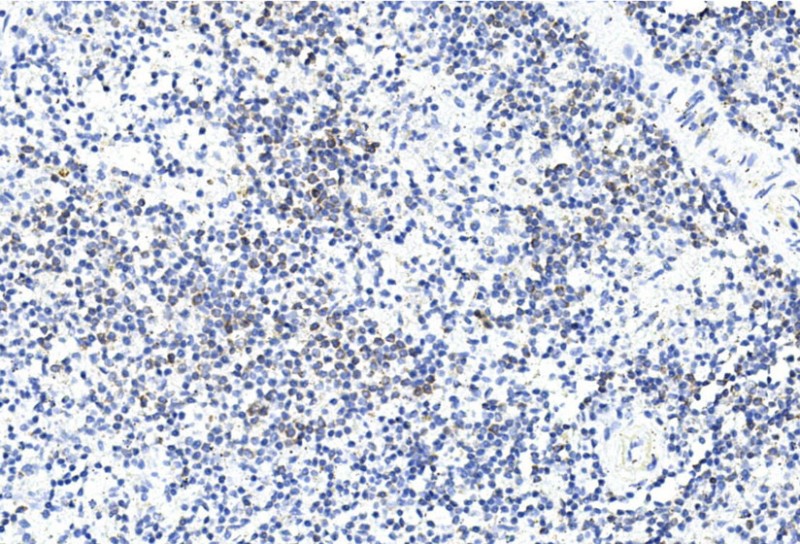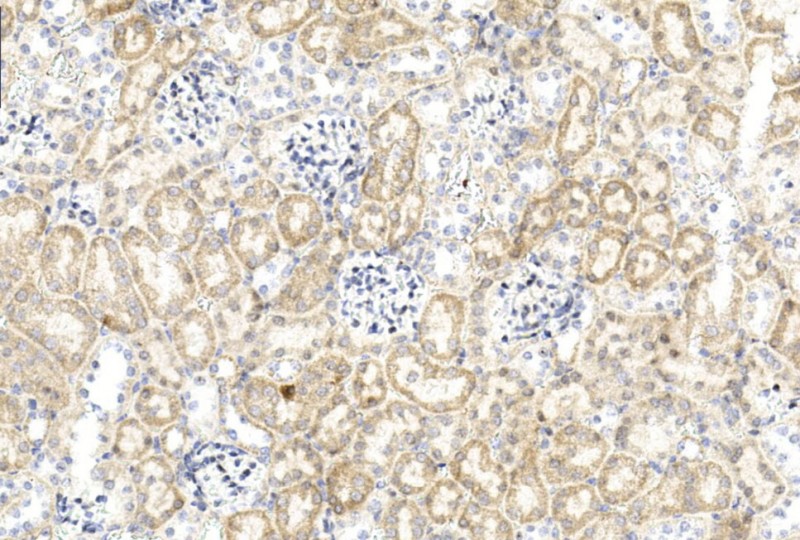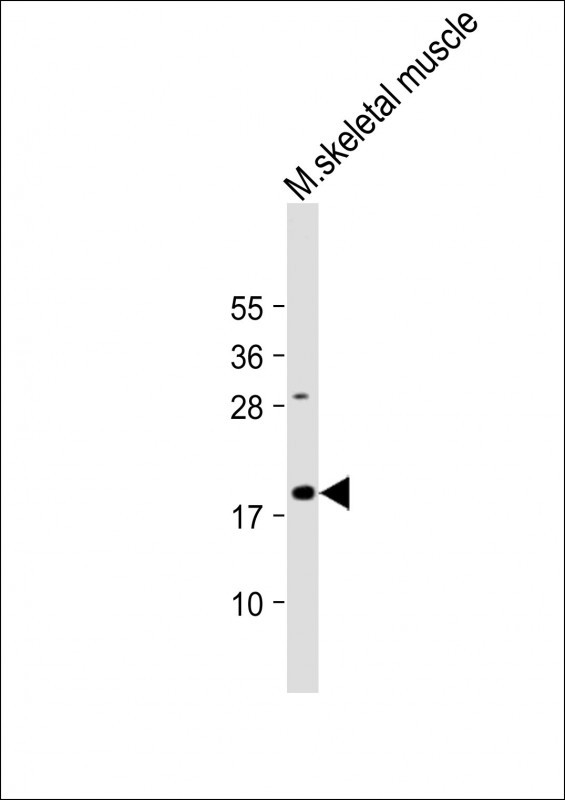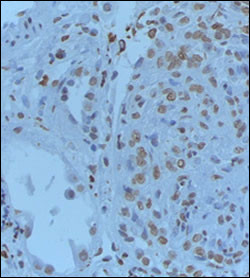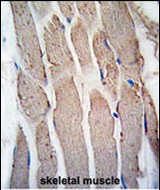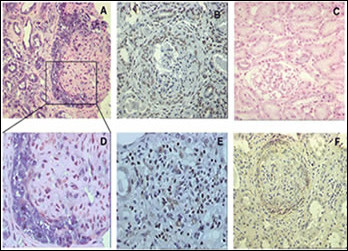GREMLIN Antibody (C-term)
Purified Rabbit Polyclonal Antibody (Pab)
- SPECIFICATION
- CITATIONS: 11
- PROTOCOLS
- BACKGROUND

Application
| IHC-P, WB, E |
|---|---|
| Primary Accession | O70326 |
| Other Accession | O35793, O60565 |
| Reactivity | Human, Mouse |
| Predicted | Rat |
| Host | Rabbit |
| Clonality | Polyclonal |
| Isotype | Rabbit IgG |
| Calculated MW | 20710 Da |
| Antigen Region | 147-175 aa |
| Gene ID | 23892 |
|---|---|
| Other Names | Gremlin-1, Cysteine knot superfamily 1, BMP antagonist 1, Down-regulated in Mos-transformed cells protein, Grem1, Cktsf1b1, Drm |
| Target/Specificity | This GREMLIN antibody is generated from rabbits immunized with a KLH conjugated synthetic peptide between 147-175 amino acids from the C-terminal region of mouse GREMLIN. |
| Dilution | IHC-P~~1:50~100 WB~~1:2000 |
| Format | Purified polyclonal antibody supplied in PBS with 0.09% (W/V) sodium azide. This antibody is purified through a protein A column, followed by peptide affinity purification. |
| Storage | Maintain refrigerated at 2-8°C for up to 2 weeks. For long term storage store at -20°C in small aliquots to prevent freeze-thaw cycles. |
| Precautions | GREMLIN Antibody (C-term) is for research use only and not for use in diagnostic or therapeutic procedures. |
| Name | Grem1 |
|---|---|
| Synonyms | Cktsf1b1, Drm |
| Function | Cytokine that may play an important role during carcinogenesis and metanephric kidney organogenesis, as BMP a antagonist required for early limb outgrowth and patterning in maintaining the FGF4-SHH feedback loop (PubMed:12808456, PubMed:15201225). Down-regulates the BMP4 signaling in a dose-dependent manner (PubMed:15133038). Antagonist of BMP2; inhibits BMP2-mediated differentiation of osteoblasts (in vitro) (By similarity). Acts as inhibitor of monocyte chemotaxis (By similarity). |
| Cellular Location | Secreted. |
| Tissue Location | Highly expressed in spleen and to a lesser extent in lung, skeletal muscle and kidney. Expressed only in non-transformed cells or primary fibroblasts in culture but not in established transformed or tumor derived cell lines. Broadly expressed in limb bud mesenchyme but restricted to the distal limb bud mesenchyme and concentrated posteriorly. Expressed in ovary especially in granulosa cells of follicles of type 4. |

Provided below are standard protocols that you may find useful for product applications.
Background
GREMLIN is a member of the BMP (bone morphogenic protein) antagonist family. Like BMPs, BMP antagonists contain cystine knots and typically form homo- and heterodimers. The CAN (cerberus and dan) subfamily of BMP antagonists, to which this gene belongs, is characterized by a C-terminal cystine knot with an eight-membered ring. The antagonistic effect of the secreted glycosylated protein encoded by this gene is likely due to its direct binding to BMP proteins. As an antagonist of BMP, this gene may play a role in regulating organogenesis, body patterning, and tissue differentiation. In mouse, this protein has been shown to relay the sonic hedgehog (SHH) signal from the polarizing region to the apical ectodermal ridge during limb bud outgrowth.
References
Chen, B., et al., J. Immunol. 173(10):5914-5917 (2004). Chen, B., et al., Biochem. Biophys. Res. Commun. 295(5):1135-1141 (2002). McMahon, R., et al., J. Biol. Chem. 275(14):9901-9904 (2000). Murphy, M., et al., J. Biol. Chem. 274(9):5830-5834 (1999). Hsu, D.R., et al., Mol. Cell 1(5):673-683 (1998).
If you have used an Abcepta product and would like to share how it has performed, please click on the "Submit Review" button and provide the requested information. Our staff will examine and post your review and contact you if needed.
If you have any additional inquiries please email technical services at tech@abcepta.com.














 Foundational characteristics of cancer include proliferation, angiogenesis, migration, evasion of apoptosis, and cellular immortality. Find key markers for these cellular processes and antibodies to detect them.
Foundational characteristics of cancer include proliferation, angiogenesis, migration, evasion of apoptosis, and cellular immortality. Find key markers for these cellular processes and antibodies to detect them. The SUMOplot™ Analysis Program predicts and scores sumoylation sites in your protein. SUMOylation is a post-translational modification involved in various cellular processes, such as nuclear-cytosolic transport, transcriptional regulation, apoptosis, protein stability, response to stress, and progression through the cell cycle.
The SUMOplot™ Analysis Program predicts and scores sumoylation sites in your protein. SUMOylation is a post-translational modification involved in various cellular processes, such as nuclear-cytosolic transport, transcriptional regulation, apoptosis, protein stability, response to stress, and progression through the cell cycle. The Autophagy Receptor Motif Plotter predicts and scores autophagy receptor binding sites in your protein. Identifying proteins connected to this pathway is critical to understanding the role of autophagy in physiological as well as pathological processes such as development, differentiation, neurodegenerative diseases, stress, infection, and cancer.
The Autophagy Receptor Motif Plotter predicts and scores autophagy receptor binding sites in your protein. Identifying proteins connected to this pathway is critical to understanding the role of autophagy in physiological as well as pathological processes such as development, differentiation, neurodegenerative diseases, stress, infection, and cancer.
